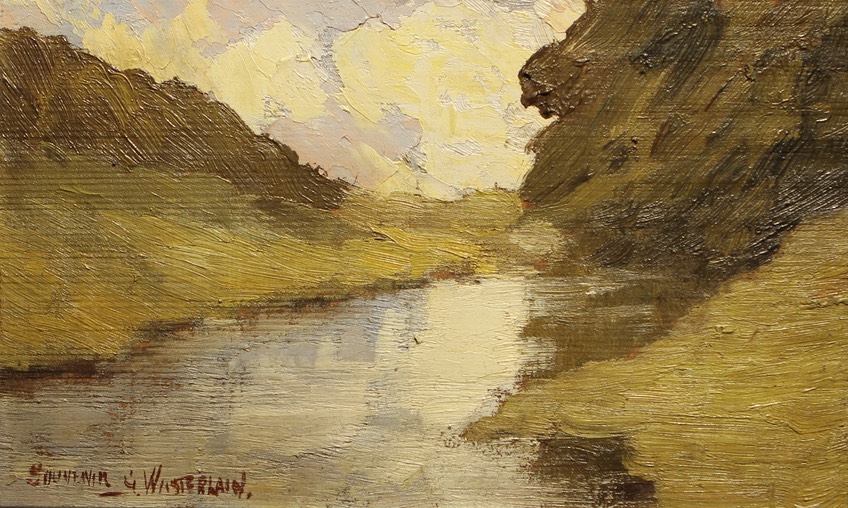
Georges Wasterlain was born on January 12, 1889 as the eldest of four children. His father was a wealthy miner, and wanted his son to become a skilled craftsman. From an early age he showed his talent at school through his drawings. He could not, however, submit to the strict discipline at school, and started to work in the metal industry. At the age of fifteen he ended up in the coalmine of Mariement-Bascoup. He worked in the mine dust, and studied the miners there. His work mates, skinny with their curved backs and wet with sweat, became his models. He drew the miners with pencil, chalk or charcoal.
In 1909 Georges Wasterlain met his wife, Irma Leclercq. They had three children, a daughter and two sons, Albert and Robert. The First World War broke out in July 1914 and on 4 August he was called to serve. His family had received word that he had been killed, however, he was mortally wounded but survived.He had been taken prisoner by the German troops. He ended up in the Sennelager camp.
In 1916 a fire broke out in the house where his wife and children were staying, and his entire property went up in the flames. In addition, his daughter died later this year. After the liberation, he returned with his family to his parental home in Chapelle-lez-Herlaimont, where his parents ordered him to go back to work in the mine to support his family, and advised his wife to burn his drawing and painting materials. Disappointed by this misunderstanding, he left his parents home, wandered around Brussels first and finally went to Halle in September 1919 where he tried to live the artist's existence. He bought a house with a heavy mortgage and took the risk of his decision. It was hard times, full of cold and deprivation.
His wife went from house to house to sell his works with their six-year-old son at her side.In January 1922 Wasterlain took part in an exhibition in Brussels, room Delgay. His works are filled with great grief for his deceased daughter who were black-haired and gloomy and were not appreciated by the jury. It became a fiasco. However, he did not let himself be discouraged, and one year later he exhibited again with new works. More and more he came to the conviction that he had to sculpt. In order to gain inspiration, he went from Halle to the Ardennes to paint colorful sunrises, and to look for stones suitable for chiseling. In 1924 he exhibited in Trazegnies with only sculpture. The criticism was still there, but not overwhelming. Two years later, in 1926, he again ventures his chance in his hometown of Halle. Several notables and neighbors came to greet him, but the miners' life was unknown to them, and his works were little acclaimed. Notwithstanding this, he received a laudatory article in “ De Standard”. The exhibition in Bergen caused a positive criticism from art connoisseur Fernand Legrand. The sale started and in 1928 Wasterlain won the "Grand Prix du Hainaut" for his overall oeuvre in sculpture. For that occasion he created the work "Le Violoniste", a self-portrait, because Georges Wasterlain was also a gifted violinist. In March 1928 he exhibits together with Georges Minne in the "Palais du Peuple" in Charleroi. It became a triumph, thanks to his friend, Wasterlain received international recognition and assignments. The memorial of Quaregnon , a twenty-meter triptych, dates from that period and consists of three superimposed reliefs dedicated to the victims of the First World War.
Georges Wasterlain concentrated on sculpting for the rest of his life. He died in March 1963.